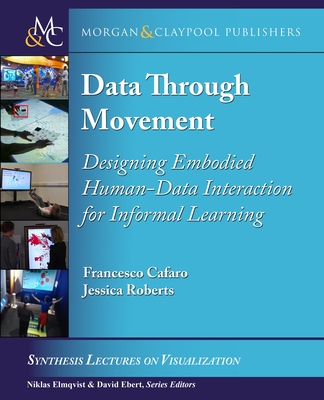Design of Visualizations for Human-Information Interaction: A Pattern-Based Framework
暫譯: 人機資訊互動的視覺化設計:基於模式的框架
Kamran Sedig, Paul Parsons
- 出版商: Morgan & Claypool
- 出版日期: 2016-04-18
- 售價: $2,410
- 貴賓價: 9.5 折 $2,290
- 語言: 英文
- 頁數: 202
- 裝訂: Paperback
- ISBN: 1627057471
- ISBN-13: 9781627057479
海外代購書籍(需單獨結帳)
商品描述
Interest in visualization design has increased in recent years. While there is a large body of existing work from which visualization designers can draw, much of the past research has focused on developing new tools and techniques that are aimed at specific contexts. Less focus has been placed on developing holistic frameworks, models, and theories that can guide visualization design at a general level-a level that transcends domains, data types, users, and other contextual factors. In addition, little emphasis has been placed on the thinking processes of designers, including the concepts that designers use, while they are engaged in a visualization design activity.
In this book we present a general, holistic framework that is intended to support visualization design for human-information interaction. The framework is composed of a number of conceptual elements that can aid in design thinking. The core of the framework is a pattern language-consisting of a set of 14 basic, abstract patterns-and a simple syntax for describing how the patterns are blended. We also present a design process, made up of four main stages, for creating static or interactive visualizations. The 4-stage design process places the patterns at the core of designers' thinking, and employs a number of conceptual tools that help designers think systematically about creating visualizations based on the information they intend to represent.
Although the framework can be used to design static visualizations for simple tasks, its real utility can be found when designing visualizations with interactive possibilities in mind-in other words, designing to support a human-information interactive discourse. This is especially true in contexts where interactive visualizations need to support complex tasks and activities involving large and complex information spaces. The framework is intended to be general and can thus be used to design visualizations for diverse domains, users, information spaces, and tasks in different fields such as business intelligence, health and medical informatics, digital libraries, journalism, education, scientific discovery, and others. Drawing from research in multiple disciplines, we introduce novel concepts and terms that can positively contribute to visualization design practice and education, and will hopefully stimulate further research in this area.
商品描述(中文翻譯)
近年來,對於視覺化設計的興趣有所增加。儘管已有大量現有的研究成果可供視覺化設計師參考,但過去的研究大多集中於開發針對特定情境的新工具和技術。對於開發能夠在一般層面上指導視覺化設計的整體框架、模型和理論的關注則相對較少,這種一般層面超越了領域、數據類型、使用者及其他情境因素。此外,對於設計師的思考過程,包括設計師在進行視覺化設計活動時所使用的概念,重視程度也不高。
在本書中,我們提出了一個通用的整體框架,旨在支持人類與信息互動的視覺化設計。該框架由多個概念元素組成,能夠幫助設計思考。框架的核心是一種模式語言,由14個基本的抽象模式組成,以及描述這些模式如何融合的簡單語法。我們還提出了一個設計過程,由四個主要階段組成,用於創建靜態或互動式的視覺化。這個四階段的設計過程將模式置於設計師思考的核心,並使用多種概念工具,幫助設計師系統性地思考如何根據他們打算表達的信息來創建視覺化。
儘管該框架可以用於設計簡單任務的靜態視覺化,但其真正的效用在於設計考慮互動可能性的視覺化——換句話說,設計以支持人類與信息的互動對話。這在需要支持涉及大型和複雜信息空間的複雜任務和活動的情境中特別重要。該框架旨在通用,因此可以用於設計適用於不同領域、使用者、信息空間和任務的視覺化,這些領域包括商業智能、健康與醫療信息學、數位圖書館、新聞學、教育、科學發現等。基於多學科的研究,我們引入了新穎的概念和術語,這些概念和術語能夠對視覺化設計實踐和教育產生積極的貢獻,並希望能夠激發該領域進一步的研究。



















